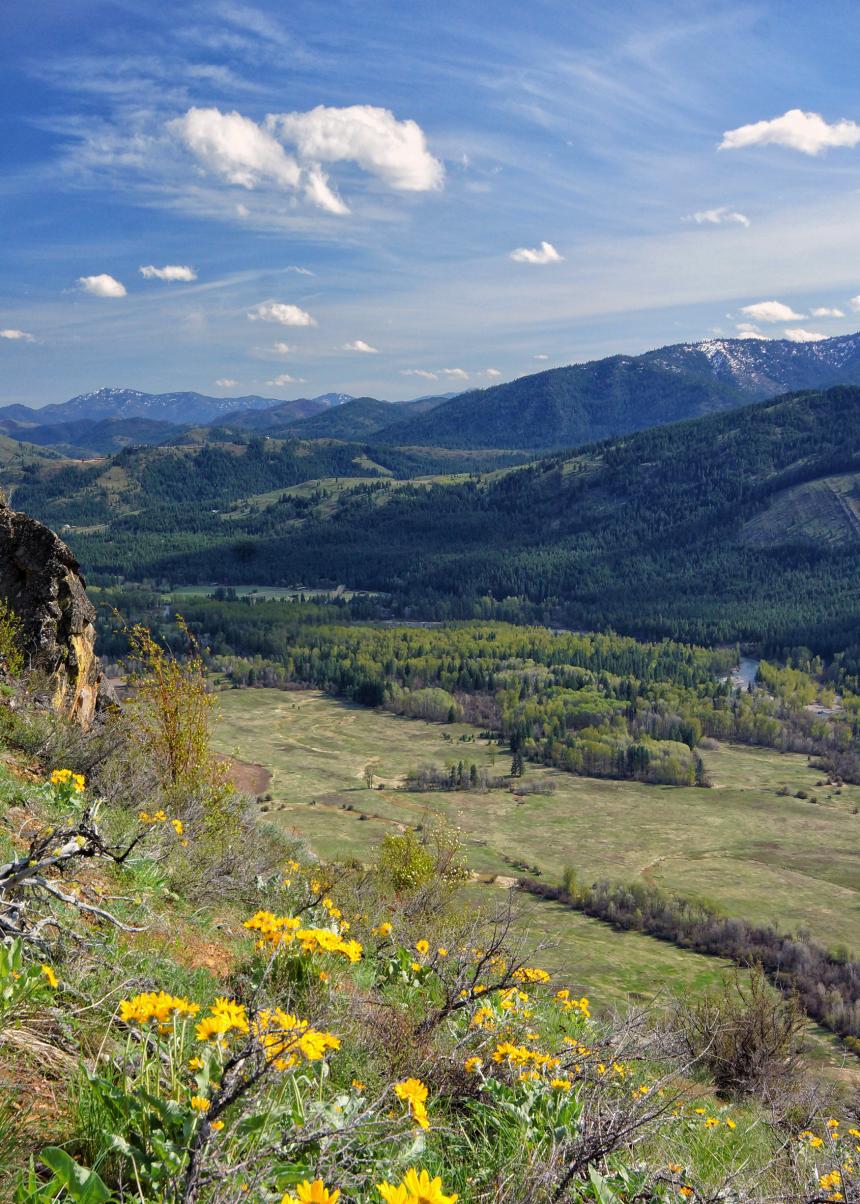
Some quick thinking, cooperation, and willingness to work outside the norm led to avoiding potential problems between wolves and livestock in one area of the state this grazing season.
In late May 2019, Washington Department of Fish and Wildlife (WDFW) staff confirmed wolves were denning on a US Forest Service (USFS) allotment and shared the information with USFS staff. Due to previous notification of wolf trapping in the pasture, the livestock producer had already taken steps to avoid interactions between wolves and cows by voluntarily delaying turning out livestock to that grazing area.
To discuss how to address this latest challenge, USFS staff, WDFW staff, US Fish and Wildlife Service (USFWS) staff, and the two producers who share the allotment held a meeting to discuss wolf behavior, nonlethal deterrence measures, and depredation investigation procedures.
For the livestock producer who had the den site on the permitted pasture, USFS offered two alternative allotments that were vacant for the season. The Department also offered pasture in the Big Valley Unit of the Methow Wildlife Area, which had been used as emergency pasture following the Carlton Complex Fire in 2014. It can be a challenge to find available or nearby alternative parcels in many cases, and all three options this time posed difficulties concerning infrastructure such as fencing and watering points. In the end, the producer elected to utilize the Big Valley Unit.
Okanogan lands staff were able to improve infrastructure of the approximately 250-acre Big Valley area on short notice. The unit was used until August, at which point livestock were relocated to the original USFS allotment after the denning period ended and wolves had moved their young to a rendezvous site outside the pasture. The grazing rotation continued as per the annual operating instructions and the season ended without incident.
This example of working together on a short timeline to come up with a solution to avoid a potentially negative situation demonstrates the benefits of cooperation between public lands agencies and livestock producers. Their history of working within the local Coordinated Resource Management (CRM) process helped develop trust and an understanding of the difficulties involved in this undertaking. Willingness to collaborate in finding alternatives to unforeseen obstacles is crucial, and this season, was able to prevent interactions between wolves and livestock.
WDFW’s Region 2 has more grazing permits than the rest of the state combined, with the highest concentration of permits in Okanogan County. It takes a significant investment of time and resources to provide emergency pasture following wildfire or temporary permits related to wolf-livestock interaction. However, proactive collaboration and coordination among WDFW, USFS, and the livestock producer can be key in mitigating interactions and promoting coexistence among wolves, livestock, and producers.